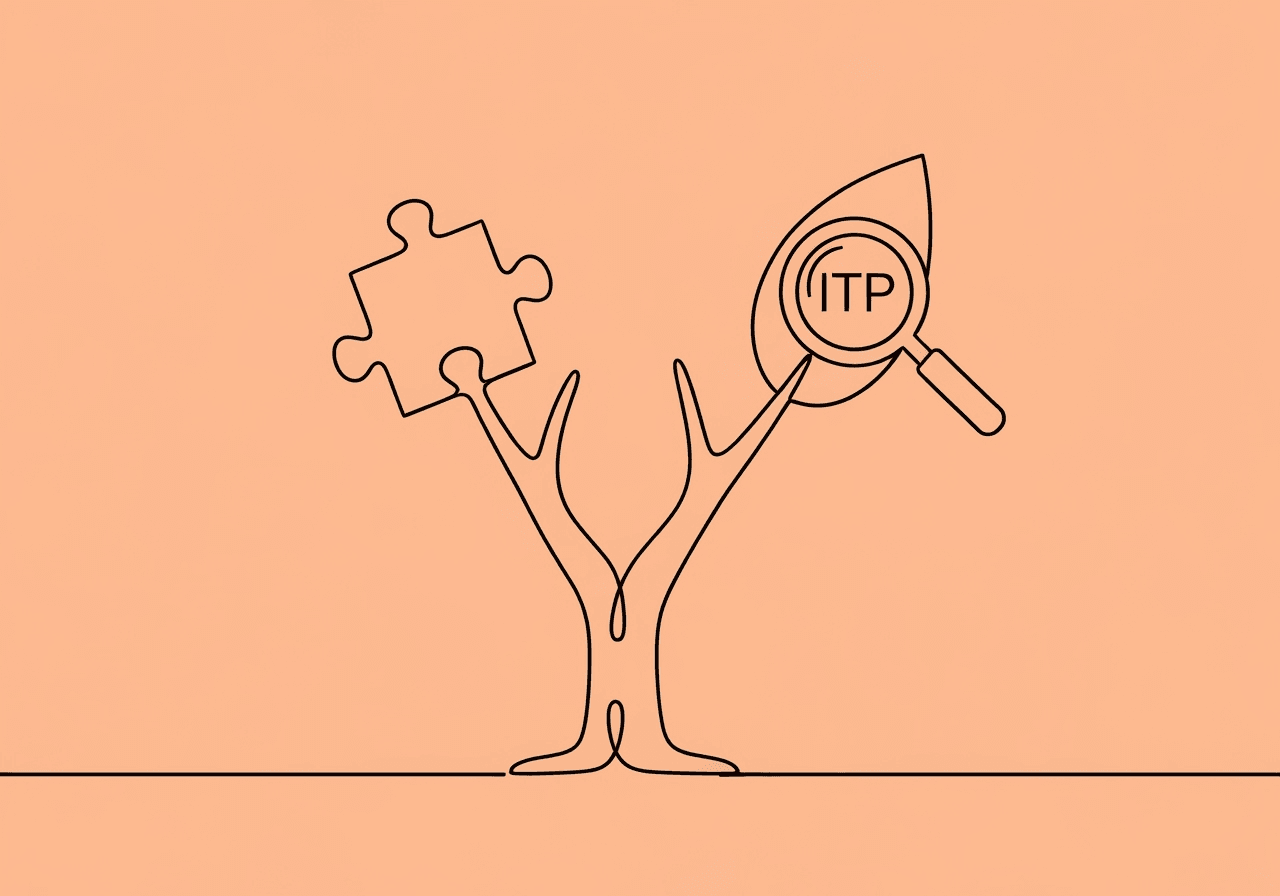Master BACB 1.06: Documenting Dual Relationships Ethically

Tackling the complexities of ethical practice in Applied Behavior Analysis (ABA) is key for every Board Certified Behavior Analyst (BCBA). As professional boundaries face increasing scrutiny, BACB 1.06 ethical documentation becomes a cornerstone for maintaining integrity and client welfare. This is especially true when addressing multiple relationships and conflicts of interest. The Behavior Analyst Certification Board (BACB) states that these situations can impair objectivity and lead to harm if not managed properly, making proactive avoidance and thorough record-keeping essential (Ethics Code for Behavior Analysts, 2022).
This FAQ-style article explores BACB 1.06 ethical documentation with practical guidance for BCBAs. We will cover how to handle these complex situations based on official BACB guidelines. By the end, you'll have actionable steps to strengthen your documentation and protect your professional standing.
Here’s what you’ll learn:
- What BACB Code 1.06 says about multiple relationships.
- How to document risk communication and unavoidable dual roles.
- What steps to take for resolving non-compliant relationships.
- How to handle gifts and avoid conflicts of interest.
Introduction to BACB Code 1.06: Multiple Relationships and Conflicts of Interest
The BACB Ethics Code 1.06 outlines standards for behavior analysts to avoid multiple relationships and conflicts of interest that could compromise professional judgment or client care. This code, effective since January 1, 2022, requires BCBAs to prioritize client welfare by preventing situations where personal, social, or financial ties overlap with professional roles. For instance, engaging as both a therapist and a family friend risks boundary blurring, which the BACB explicitly advises against to safeguard objectivity.
Documentation plays a central part here, as BCBAs must record all relevant communications, decisions, and safeguards if such situations arise. The BACB's 2022 Ethics Code clarifies that failing to manage these situations ethically can result in certification violations. This highlights why multiple relationships documentation BCBA must be precise and timely. This section sets the foundation for ethical practice, urging BCBAs to review the full code regularly for compliance.
To stay aligned, BCBAs should integrate these principles into daily workflows, such as session notes and supervision logs. For broader best practices, explore BCBA ethical documentation best practices. This proactive approach not only meets BACB requirements but also builds trust with clients and stakeholders.
The Difference Between Multiple Relationships and Conflicts of Interest
A multiple relationship occurs when a BCBA holds two or more roles with the same individual or related parties, such as being a clinician and a social acquaintance. These can stem from personal, familial, or business connections and often lead to challenges in maintaining professional boundaries. On the other hand, a conflict of interest arises when personal or secondary interests clash with professional duties, potentially biasing decisions—like favoring a family member's business in treatment referrals.
While multiple relationships describe the overlapping roles, conflicts of interest focus on the ethical risk of impaired judgment. The BACB notes that multiple relationships often create conflicts, but not always. For example, a brief social encounter might not impair objectivity if it's documented and monitored. Understanding this distinction is crucial for conflict of interest ABA case notes, ensuring notes reflect the specific risks without conflating the terms.
BCBAs should assess situations using this framework to decide on avoidance or management. Bullet points can clarify in case notes:
- Identify the roles involved (e.g., professional + personal).
- Evaluate potential bias or harm to client welfare.
- Document the assessment and any mitigation steps.
For related supervision strategies, see BCBA ethical supervision documentation. This clarity supports ethical decision-making and audit readiness.
Documenting Risk Communication to Clients Under BACB 1.06
Effective BACB 1.06 ethical documentation starts with transparent risk communication when a potential multiple relationship emerges. BCBAs must inform clients or stakeholders about identified risks, such as how a secondary relationship might affect session objectivity. You should use clear, jargon-free language. This conversation should occur promptly, ideally in writing, to establish mutual understanding and consent to proceed with safeguards.
In practice, document the date, participants, key discussion points, and client responses in session notes or a dedicated ethical log. As the BACB Ethics Code emphasizes, it's important to monitor for evolving risks. Therefore, your follow-up entries should note any ongoing boundary enforcement. For example, if a client's parent is a colleague, record how you'll handle dual oversight to prevent bias.
To structure this:
- Start with a risk summary.
- Include client acknowledgment (e.g., signed form).
- Outline mitigation (e.g., adjusted supervision).
Tools like customizable templates can streamline this. Consider integrating them with progress tracking for comprehensive records. This documentation not only complies with ethics but defends against potential complaints.
Required Documentation for Unavoidable Multiple Relationships
When a multiple relationship is unavoidable—such as in small communities—multiple relationships documentation BCBA requires clear boundaries and supervision plans. While the BACB (2022) mandates avoiding such scenarios, BCBAs must communicate risks, set limits, and monitor service impacts if they persist. For instance, supervising a relative demands a detailed plan that outlines how objectivity will be maintained through external consultation.
Essential records include the rationale for the situation being unavoidable, signed boundary agreements, and regular reviews in supervision notes. To mitigate harm, you should include specifics like modified session structures or third-party oversight, a recommendation echoed by resources like the ABA Ethics Hotline. This ensures client care remains the top priority.
| Key Documentation Element | Description & Example |
|---|---|
| Rationale for Unavoidability | Explain why the relationship cannot be avoided (e.g., sole provider in a rural area). |
| Risk Communication Record | A signed document showing the client was informed of and understands the risks. |
| Boundary Agreement | Clearly defines the limits of the relationship (e.g., interactions are limited to professional settings only). |
| Mitigation Plan | Steps taken to reduce risk, such as third-party supervision or weekly ethics check-ins. |
| Ongoing Monitoring Notes | Regular updates in case notes tracking the relationship's impact on services and objectivity. |
Linking to goal-setting, this ties into the ABA goal documentation BCBA guide for holistic compliance. Thorough documentation here demonstrates ethical diligence.
Steps for Resolving Non-Compliant Relationships and Documenting Resolution
Resolving a non-compliant relationship under BACB 1.06 ethical documentation involves swift assessment, communication, and transition if needed. First, identify the violation—such as an unintended social tie—and disclose it to involved parties, explaining potential harms like compromised confidentiality. If resolution isn't immediate, consult a supervisor or ethics expert, then document the plan, including steps like service referral.
According to the 2022 Ethics Code, ongoing monitoring is required until the relationship ends. Your records must capture all actions, rationale, and client impacts. For example, if a BCBA accepts a non-nominal gift creating obligation, note the decline, reasons, and alternative gestures to maintain rapport.
Follow these steps:
- Assess and disclose the issue promptly.
- Develop a resolution timeline (e.g., service transfer within 30 days).
- Record consultations, agreements, and follow-ups.
- Evaluate post-resolution client outcomes.
This process protects your certification status. For inconsistent routines post-resolution, reference ABA strategies for consistent home routines. Proper logging turns challenges into compliance strengths.
Documentation Related to Accepting or Declining Gifts
Gifts from clients can subtly introduce conflicts of interest, so BACB 1.06 ethical documentation demands careful handling. The BACB (2022) limits gifts to under $10 USD. It advises declining anything that might influence judgment, such as high-value items that imply obligation. Document the offer, your decision (e.g., polite refusal), and rationale in case notes to show boundary adherence.
For instance, if a family offers a meal invitation, record it as a potential multiple relationship risk and note how you redirected to professional channels. According to BACB guidelines, this prevents exploitation perceptions and maintains transparency in conflict of interest ABA case notes.
Best practices include:
- Verbal and written acknowledgment of the gift.
- Explanation of policy (e.g., "To ensure impartial care...").
- Follow-up on relationship health.
This simple logging reinforces ethics and supports audit defense.
Frequently Asked Questions
What does BACB Code 1.06 specifically say about multiple relationships?
BACB Code 1.06(a) states that due to potential harm, behavior analysts avoid multiple relationships. If one is unavoidable, they must take steps to prevent impaired objectivity or effectiveness. This includes communicating risks and monitoring continuously, as outlined in the Ethics Code for Behavior Analysts (BACB, 2022). Documentation must cover all mitigation efforts to protect client welfare.
How should a BCBA document potential conflicts of interest in case notes?
Document the conflict identification, risks to client care, communication with stakeholders, and resolution steps, ensuring confidentiality. The BACB requires clear records of actions taken to maintain objectivity, such as consultations. Use specific entries in ABA case notes to track ongoing monitoring, aligning with the current Ethics Code for Behavior Analysts (BACB, 2022).
Why is avoiding multiple relationships critical in ABA ethics?
Multiple relationships risk impairing professional judgment, breaching confidentiality, and harming clients by blurring boundaries between roles. According to the Ethics Code, these can lead to exploitation or reduced service quality, which is why proactive avoidance is emphasized. Proper documentation helps mitigate these risks and demonstrate compliance.
What are examples of dual relationships that violate BACB ethics?
Examples include a BCBA dating a client's family member, supervising a relative, or providing non-ABA services like tutoring to a client. The ABA Ethics Hotline notes these create conflicts that violate Code 1.06 by risking bias. You can find more examples in their Frequently Asked Questions. Always document assessments to avoid unintentional breaches.
How can a BCBA manage an unintentional multiple relationship?
Disclose it immediately to all parties, assess risks, and implement boundaries like adjusted supervision. You should also seek consultation if needed. The Ethics Code requires documenting all resolution efforts. If the issue remains unresolved, transition services to prioritize ethical standards.
How do I communicate boundaries regarding gifts or social invitations?
Use clear, empathetic language to explain your policy, such as, "To keep our focus professional..." and document the exchange. The BACB limits gifts to a maximum of $10, and declines should be noted to prevent conflicts, as required by the 2022 Ethics Code. This maintains trust while upholding standards.
In wrapping up, BACB 1.06 ethical documentation is vital for navigating dual relationships and conflicts. It ensures a client-centered practice free from bias. By drawing on the BACB Ethics Code and related resources, professionals can avoid pitfalls through proactive communication, boundary-setting, and meticulous records. This not only complies with standards but fortifies audit defense, as evidenced by BACB enforcement summaries showing documentation is a key compliance factor.
To apply this:
- Review your current note templates for ethics sections and update as needed.
- Schedule quarterly self-audits of case notes for 1.06 alignment.
- Consult the full BACB Ethics Code or a peer supervisor for complex cases.
Prioritizing these steps empowers BCBAs to deliver ethical, effective ABA services with confidence.
Popular in Compliance & HIPAA
- 1
ABA Documentation Checklist: RBT Compliance Guide 2025
5779 min read - 2
BCBA Procedural Fidelity Checklist: Essential H-6 Guide
5376 min read - 3
RBT Renewal Competency Documentation Guide for BCBAs
4036 min read - 4
BCBA Ethical Documentation Best Practices
3626 min read - 5
RBT Supervision Log Audit Checklist for BCBAs
3176 min read
Popular in Compliance & HIPAA
- 1
ABA Documentation Checklist: RBT Compliance Guide 2025
5779 min read - 2
BCBA Procedural Fidelity Checklist: Essential H-6 Guide
5376 min read - 3
RBT Renewal Competency Documentation Guide for BCBAs
4036 min read - 4
BCBA Ethical Documentation Best Practices
3626 min read - 5
RBT Supervision Log Audit Checklist for BCBAs
3176 min read
Related Resources
Explore more helpful content on similar topics

BIP vs ITP Documentation: Guide for BCBAs
Explore BIP vs ITP documentation for BCBAs: Uncover key differences, compliance essentials, and ABA integration strategies to optimize treatment plans and ensure audit readiness.

BCBA Ethical Documentation Best Practices
Navigate BCBA ethical documentation challenges with expert insights into ABA ethics code and best practices. Learn to maintain accuracy, confidentiality, and compliance while avoiding common breaches in session notes and billing.

Guide to BCBA Service Termination Documentation
Navigating BCBA service termination documentation? Learn essential ethical guidelines under BACB ethics 2.15 for justifying discontinuation, ensuring continuity of care, and handling data transfers to new providers.